

Do You Know The 7 Steps Of The Writing Process?
How much do you know about the different stages of the writing process? Even if you’ve been writing for years, your understanding of the processes of writing may be limited to writing, editing, and publishing.
It’s not your fault. Much of the writing instruction in school and online focus most heavily on those three critical steps.
Important as they are, though, there’s more to creating a successful book than those three. And as a writer, you need to know.
The 7 Steps of the Writing Process
Read on to familiarize yourself with the seven writing process steps most writers go through — at least to some extent. The more you know each step and its importance, the more you can do it justice before moving on to the next.
1. Planning or Prewriting
This is probably the most fun part of the writing process. Here’s where an idea leads to a brainstorm, which leads to an outline (or something like it).

Whether you’re a plotter, a pantser, or something in between, every writer has some idea of what they want to accomplish with their writing. This is the goal you want the final draft to meet.
With both fiction and nonfiction , every author needs to identify two things for each writing project:
- Intended audience = “For whom am I writing this?”
- Chosen purpose = “What do I want this piece of writing to accomplish?”
In other words, you start with the endpoint in mind. You look at your writing project the way your audience would. And you keep its purpose foremost at every step.
From planning, we move to the next fun stage.
2. Drafting (or Writing the First Draft)
There’s a reason we don’t just call this the “rough draft,” anymore. Every first draft is rough. And you’ll probably have more than one rough draft before you’re ready to publish.
For your first draft, you’ll be freewriting your way from beginning to end, drawing from your outline, or a list of main plot points, depending on your particular process.
To get to the finish line for this first draft, it helps to set word count goals for each day or each week and to set a deadline based on those word counts and an approximate idea of how long this writing project should be.
Seeing that deadline on your calendar can help keep you motivated to meet your daily and weekly targets. It also helps to reserve a specific time of day for writing.
Another useful tool is a Pomodoro timer, which you can set for 20-25 minute bursts with short breaks between them — until you reach your word count for the day.
3. Sharing Your First Draft
Once you’ve finished your first draft, it’s time to take a break from it. The next time you sit down to read through it, you’ll be more objective than you would be right after typing “The End” or logging the final word count.
It’s also time to let others see your baby, so they can provide feedback on what they like and what isn’t working for them.
You can find willing readers in a variety of places:
- Social media groups for writers
- Social media groups for readers of a particular genre
- Your email list (if you have one)
- Local and online writing groups and forums
This is where you’ll get a sense of whether your first draft is fulfilling its original purpose and whether it’s likely to appeal to its intended audience.
You’ll also get some feedback on whether you use certain words too often, as well as whether your writing is clear and enjoyable to read.
4. Evaluating Your Draft
Here’s where you do a full evaluation of your first draft, taking into account the feedback you’ve received, as well as what you’re noticing as you read through it. You’ll mark any mistakes with grammar or mechanics.
And you’ll look for the answer to important questions:
- Is this piece of writing effective/ Does it fulfill its purpose?
- Do my readers like my main character? (Fiction)
- Does the story make sense and satisfy the reader? (Fiction)
- Does it answer the questions presented at the beginning? ( Nonfiction )
- Is it written in a way the intended audience can understand and enjoy?
Once you’ve thoroughly evaluated your work, you can move on to the revision stage and create the next draft.
More Related Articles
How To Create An Em Dash Or Hyphen
Are You Ready To Test Your Proofreading Skills?
How To Write A Book For Kindle About Your Expertise Or Passion
5. Revising Your Content
Revising and editing get mixed up a lot, but they’re not the same thing.
With revising, you’re making changes to the content based on the feedback you’ve received and on your own evaluation of the previous draft.
- To correct structural problems in your book or story
- To find loose ends and tie them up (Fiction)
- To correct unhelpful deviations from genre norms (Fiction)
- To add or remove content to improve flow and/or usefulness
You revise your draft to create a new one that comes closer to achieving your original goals for it. Your newest revision is your newest draft.
If you’re hiring a professional editor for the next step, you’ll likely be doing more revision after they’ve provided their own feedback on the draft you send them.
Editing is about eliminating errors in your (revised) content that can affect its accuracy, clarity, and readability.

By the time editing is done, your writing should be free of the following:
- Grammatical errors
- Punctuation/mechanical and spelling errors
- Misquoted content
- Missing (necessary) citations and source info
- Factual errors
- Awkward phrasing
- Unnecessary repetition
Good editing makes your work easier and more enjoyable to read. A well-edited book is less likely to get negative reviews titled, “Needs editing.” And when it comes to books, it’s best to go beyond self-editing and find a skilled professional.
A competent editor will be more objective about your work and is more likely to catch mistakes you don’t see because your eyes have learned to compensate for them.
7. Publishing Your Final Product
Here’s where you take your final draft — the final product of all the previous steps — and prepare it for publication.
Not only will it need to be formatted (for ebook, print, and audiobook), but you’ll also need a cover that will appeal to your intended audience as much as your content will.
Whether you budget for these things or not depends on the path you choose to publish your book:
- Traditional Publishing — where the publishing house provides editing, formatting, and cover design, as well as some marketing
- Self-Publishing — where you contract with professionals and pay for editing, formatting, and cover design.
- Self-Publishing with a Publishing Company — where you pay the company to provide editing, formatting, and cover design using their in-house professionals.
And once your book is live and ready to buy, it’s time to make it more visible to your intended audience. Otherwise, it would fail in its purpose, too.
Are you ready to begin 7 steps of the writing process?
Now that you’re familiar with the writing process examples in this post, how do you envision your own process?
While it should include the seven steps described here, it’ll also include personal preferences of your own — like the following:
- Writing music and other ambient details
- Writing schedule
- Word count targets and time frames
The more you learn about the finer details of the writing process, the more likely you are to create content your readers will love. And the more likely they are to find it.
Wherever you are in the process, our goal here is to provide content that will help you make the most of it.

Leave a Comment Cancel reply
This site uses Akismet to reduce spam. Learn how your comment data is processed .
Have a language expert improve your writing
Run a free plagiarism check in 10 minutes, generate accurate citations for free.
- Knowledge Base
The Beginner's Guide to Writing an Essay | Steps & Examples
An academic essay is a focused piece of writing that develops an idea or argument using evidence, analysis, and interpretation.
There are many types of essays you might write as a student. The content and length of an essay depends on your level, subject of study, and course requirements. However, most essays at university level are argumentative — they aim to persuade the reader of a particular position or perspective on a topic.
The essay writing process consists of three main stages:
- Preparation: Decide on your topic, do your research, and create an essay outline.
- Writing : Set out your argument in the introduction, develop it with evidence in the main body, and wrap it up with a conclusion.
- Revision: Check your essay on the content, organization, grammar, spelling, and formatting of your essay.
Instantly correct all language mistakes in your text
Upload your document to correct all your mistakes in minutes

Table of contents
Essay writing process, preparation for writing an essay, writing the introduction, writing the main body, writing the conclusion, essay checklist, lecture slides, frequently asked questions about writing an essay.
The writing process of preparation, writing, and revisions applies to every essay or paper, but the time and effort spent on each stage depends on the type of essay .
For example, if you’ve been assigned a five-paragraph expository essay for a high school class, you’ll probably spend the most time on the writing stage; for a college-level argumentative essay , on the other hand, you’ll need to spend more time researching your topic and developing an original argument before you start writing.
Receive feedback on language, structure, and formatting
Professional editors proofread and edit your paper by focusing on:
- Academic style
- Vague sentences
- Style consistency
See an example

Before you start writing, you should make sure you have a clear idea of what you want to say and how you’re going to say it. There are a few key steps you can follow to make sure you’re prepared:
- Understand your assignment: What is the goal of this essay? What is the length and deadline of the assignment? Is there anything you need to clarify with your teacher or professor?
- Define a topic: If you’re allowed to choose your own topic , try to pick something that you already know a bit about and that will hold your interest.
- Do your research: Read primary and secondary sources and take notes to help you work out your position and angle on the topic. You’ll use these as evidence for your points.
- Come up with a thesis: The thesis is the central point or argument that you want to make. A clear thesis is essential for a focused essay—you should keep referring back to it as you write.
- Create an outline: Map out the rough structure of your essay in an outline . This makes it easier to start writing and keeps you on track as you go.
Once you’ve got a clear idea of what you want to discuss, in what order, and what evidence you’ll use, you’re ready to start writing.
The introduction sets the tone for your essay. It should grab the reader’s interest and inform them of what to expect. The introduction generally comprises 10–20% of the text.
1. Hook your reader
The first sentence of the introduction should pique your reader’s interest and curiosity. This sentence is sometimes called the hook. It might be an intriguing question, a surprising fact, or a bold statement emphasizing the relevance of the topic.
Let’s say we’re writing an essay about the development of Braille (the raised-dot reading and writing system used by visually impaired people). Our hook can make a strong statement about the topic:
The invention of Braille was a major turning point in the history of disability.
2. Provide background on your topic
Next, it’s important to give context that will help your reader understand your argument. This might involve providing background information, giving an overview of important academic work or debates on the topic, and explaining difficult terms. Don’t provide too much detail in the introduction—you can elaborate in the body of your essay.
3. Present the thesis statement
Next, you should formulate your thesis statement— the central argument you’re going to make. The thesis statement provides focus and signals your position on the topic. It is usually one or two sentences long. The thesis statement for our essay on Braille could look like this:
As the first writing system designed for blind people’s needs, Braille was a groundbreaking new accessibility tool. It not only provided practical benefits, but also helped change the cultural status of blindness.
4. Map the structure
In longer essays, you can end the introduction by briefly describing what will be covered in each part of the essay. This guides the reader through your structure and gives a preview of how your argument will develop.
The invention of Braille marked a major turning point in the history of disability. The writing system of raised dots used by blind and visually impaired people was developed by Louis Braille in nineteenth-century France. In a society that did not value disabled people in general, blindness was particularly stigmatized, and lack of access to reading and writing was a significant barrier to social participation. The idea of tactile reading was not entirely new, but existing methods based on sighted systems were difficult to learn and use. As the first writing system designed for blind people’s needs, Braille was a groundbreaking new accessibility tool. It not only provided practical benefits, but also helped change the cultural status of blindness. This essay begins by discussing the situation of blind people in nineteenth-century Europe. It then describes the invention of Braille and the gradual process of its acceptance within blind education. Subsequently, it explores the wide-ranging effects of this invention on blind people’s social and cultural lives.
Write your essay introduction
The body of your essay is where you make arguments supporting your thesis, provide evidence, and develop your ideas. Its purpose is to present, interpret, and analyze the information and sources you have gathered to support your argument.
Length of the body text
The length of the body depends on the type of essay. On average, the body comprises 60–80% of your essay. For a high school essay, this could be just three paragraphs, but for a graduate school essay of 6,000 words, the body could take up 8–10 pages.
Paragraph structure
To give your essay a clear structure , it is important to organize it into paragraphs . Each paragraph should be centered around one main point or idea.
That idea is introduced in a topic sentence . The topic sentence should generally lead on from the previous paragraph and introduce the point to be made in this paragraph. Transition words can be used to create clear connections between sentences.
After the topic sentence, present evidence such as data, examples, or quotes from relevant sources. Be sure to interpret and explain the evidence, and show how it helps develop your overall argument.
Lack of access to reading and writing put blind people at a serious disadvantage in nineteenth-century society. Text was one of the primary methods through which people engaged with culture, communicated with others, and accessed information; without a well-developed reading system that did not rely on sight, blind people were excluded from social participation (Weygand, 2009). While disabled people in general suffered from discrimination, blindness was widely viewed as the worst disability, and it was commonly believed that blind people were incapable of pursuing a profession or improving themselves through culture (Weygand, 2009). This demonstrates the importance of reading and writing to social status at the time: without access to text, it was considered impossible to fully participate in society. Blind people were excluded from the sighted world, but also entirely dependent on sighted people for information and education.
See the full essay example
The conclusion is the final paragraph of an essay. It should generally take up no more than 10–15% of the text . A strong essay conclusion :
- Returns to your thesis
- Ties together your main points
- Shows why your argument matters
A great conclusion should finish with a memorable or impactful sentence that leaves the reader with a strong final impression.
What not to include in a conclusion
To make your essay’s conclusion as strong as possible, there are a few things you should avoid. The most common mistakes are:
- Including new arguments or evidence
- Undermining your arguments (e.g. “This is just one approach of many”)
- Using concluding phrases like “To sum up…” or “In conclusion…”
Braille paved the way for dramatic cultural changes in the way blind people were treated and the opportunities available to them. Louis Braille’s innovation was to reimagine existing reading systems from a blind perspective, and the success of this invention required sighted teachers to adapt to their students’ reality instead of the other way around. In this sense, Braille helped drive broader social changes in the status of blindness. New accessibility tools provide practical advantages to those who need them, but they can also change the perspectives and attitudes of those who do not.
Write your essay conclusion
Checklist: Essay
My essay follows the requirements of the assignment (topic and length ).
My introduction sparks the reader’s interest and provides any necessary background information on the topic.
My introduction contains a thesis statement that states the focus and position of the essay.
I use paragraphs to structure the essay.
I use topic sentences to introduce each paragraph.
Each paragraph has a single focus and a clear connection to the thesis statement.
I make clear transitions between paragraphs and ideas.
My conclusion doesn’t just repeat my points, but draws connections between arguments.
I don’t introduce new arguments or evidence in the conclusion.
I have given an in-text citation for every quote or piece of information I got from another source.
I have included a reference page at the end of my essay, listing full details of all my sources.
My citations and references are correctly formatted according to the required citation style .
My essay has an interesting and informative title.
I have followed all formatting guidelines (e.g. font, page numbers, line spacing).
Your essay meets all the most important requirements. Our editors can give it a final check to help you submit with confidence.
Open Google Slides Download PowerPoint
An essay is a focused piece of writing that explains, argues, describes, or narrates.
In high school, you may have to write many different types of essays to develop your writing skills.
Academic essays at college level are usually argumentative : you develop a clear thesis about your topic and make a case for your position using evidence, analysis and interpretation.
The structure of an essay is divided into an introduction that presents your topic and thesis statement , a body containing your in-depth analysis and arguments, and a conclusion wrapping up your ideas.
The structure of the body is flexible, but you should always spend some time thinking about how you can organize your essay to best serve your ideas.
Your essay introduction should include three main things, in this order:
- An opening hook to catch the reader’s attention.
- Relevant background information that the reader needs to know.
- A thesis statement that presents your main point or argument.
The length of each part depends on the length and complexity of your essay .
A thesis statement is a sentence that sums up the central point of your paper or essay . Everything else you write should relate to this key idea.
The thesis statement is essential in any academic essay or research paper for two main reasons:
- It gives your writing direction and focus.
- It gives the reader a concise summary of your main point.
Without a clear thesis statement, an essay can end up rambling and unfocused, leaving your reader unsure of exactly what you want to say.
A topic sentence is a sentence that expresses the main point of a paragraph . Everything else in the paragraph should relate to the topic sentence.
At college level, you must properly cite your sources in all essays , research papers , and other academic texts (except exams and in-class exercises).
Add a citation whenever you quote , paraphrase , or summarize information or ideas from a source. You should also give full source details in a bibliography or reference list at the end of your text.
The exact format of your citations depends on which citation style you are instructed to use. The most common styles are APA , MLA , and Chicago .
Is this article helpful?
Other students also liked.
- How long is an essay? Guidelines for different types of essay
- How to write an essay introduction | 4 steps & examples
- How to conclude an essay | Interactive example
More interesting articles
- Checklist for academic essays | Is your essay ready to submit?
- Comparing and contrasting in an essay | Tips & examples
- Example of a great essay | Explanations, tips & tricks
- Generate topic ideas for an essay or paper | Tips & techniques
- How to revise an essay in 3 simple steps
- How to structure an essay: Templates and tips
- How to write a descriptive essay | Example & tips
- How to write a literary analysis essay | A step-by-step guide
- How to write a narrative essay | Example & tips
- How to write a rhetorical analysis | Key concepts & examples
- How to Write a Thesis Statement | 4 Steps & Examples
- How to write an argumentative essay | Examples & tips
- How to write an essay outline | Guidelines & examples
- How to write an expository essay
- How to write the body of an essay | Drafting & redrafting
- Kinds of argumentative academic essays and their purposes
- Organizational tips for academic essays
- The four main types of essay | Quick guide with examples
- Transition sentences | Tips & examples for clear writing
"I thought AI Proofreading was useless but.."
I've been using Scribbr for years now and I know it's a service that won't disappoint. It does a good job spotting mistakes”
Table of Contents
Collaboration, information literacy, writing process, the ultimate blueprint: a research-driven deep dive into the 13 steps of the writing process.
- © 2023 by Joseph M. Moxley - University of South Florida
This article provides a comprehensive, research-based introduction to the major steps , or strategies , that writers work through as they endeavor to communicate with audiences . Since the 1960s, the writing process has been defined to be a series of steps , stages, or strategies. Most simply, the writing process is conceptualized as four major steps: prewriting , drafting , revising , editing . That model works really well for many occasions. Yet sometimes you'll face really challenging writing tasks that will force you to engage in additional steps, including, prewriting , inventing , drafting , collaborating , researching , planning , organizing , designing , rereading , revising , editing , proofreading , sharing or publishing . Expand your composing repertoire -- your ability to respond with authority , clarity , and persuasiveness -- by learning about the dispositions and strategies of successful, professional writers.

Like water cascading to the sea, flow feels inevitable, natural, purposeful. Yet achieving flow is a state of mind that can be difficult to achieve. It requires full commitment to the believing gam e (as opposed to the doubting game ).
What are the Steps of the Writing Process?
Since the 1960s, it has been popular to describe the writing process as a series of steps or stages . For simple projects, the writing process is typically defined as four major steps:
- drafting
This simplified approach to writing is quite appropriate for many exigencies–many calls to write . Often, e.g., we might read an email quickly, write a response, and then send it: write, revise, send.
However, in the real world, for more demanding projects — especially in high-stakes workplace writing or academic writing at the high school and college level — the writing process involve additional steps, or strategies , such as
- collaboration
- researching
- proofreading
- sharing or publishing.
Related Concepts: Mindset ; Self Regulation
Summary – Writing Process Steps
The summary below outlines the major steps writers work through as they endeavor to develop an idea for an audience .
1. Prewriting
Prewriting refers to all the work a writer does on a writing project before they actually begin writing .
Acts of prewriting include
- Prior to writing a first draft, analyze the context for the work. For instance, in school settings students may analyze how much of their grade will be determined by a particular assignment. They may question how many and what sources are required and what the grading criteria will be used for critiquing the work.
- To further their understanding of the assignment, writers will question who the audience is for their work, what their purpose is for writing, what style of writing their audience expects them to employ, and what rhetorical stance is appropriate for them to develop given the rhetorical situation they are addressing. (See the document planner heuristic for more on this)
- consider employing rhetorical appeals ( ethos , pathos , and logos ), rhetorical devices , and rhetorical modes they want to develop once they begin writing
- reflect on the voice , tone , and persona they want to develop
- Following rhetorical analysis and rhetorical reasoning , writers decide on the persona ; point of view ; tone , voice and style of writing they hope to develop, such as an academic writing prose style or a professional writing prose style
- making a plan, an outline, for what to do next.
2. Invention
Invention is traditionally defined as an initial stage of the writing process when writers are more focused on discovery and creative play. During the early stages of a project, writers brainstorm; they explore various topics and perspectives before committing to a specific direction for their discourse .
In practice, invention can be an ongoing concern throughout the writing process. People who are focused on solving problems and developing original ideas, arguments , artifacts, products, services, applications, and texts are open to acts of invention at any time during the writing process.
Writers have many different ways to engage in acts of invention, including
- What is the exigency, the call to write ?
- What are the ongoing scholarly debates in the peer-review literature?
- What is the problem ?
- What do they read? watch? say? What do they know about the topic? Why do they believe what they do? What are their beliefs, values, and expectations ?
- What rhetorical appeals — ethos (credibility) , pathos (emotion) , and logos (logic) — should I explore to develop the best response to this exigency , this call to write?
- What does peer-reviewed research say about the subject?
- What are the current debates about the subject?
- Embrace multiple viewpoints and consider various approaches to encourage the generation of original ideas.
- How can I experiment with different media , genres , writing styles , personas , voices , tone
- Experiment with new research methods
- Write whatever ideas occur to you. Focus on generating ideas as opposed to writing grammatically correct sentences. Get your thoughts down as fully and quickly as you can without critiquing them.
- Use heuristics to inspire discovery and creative thinking: Burke’s Pentad ; Document Planner , Journalistic Questions , The Business Model Canvas
- Embrace the uncertainty that comes with creative exploration.
- Listen to your intuition — your felt sense — when composing
- Experiment with different writing styles , genres , writing tools, and rhetorical stances
- Play the believing game early in the writing process
3. Researching
Research refers to systematic investigations that investigators carry out to discover new knowledge , test knowledge claims , solve problems , or develop new texts , products, apps, and services.
During the research stage of the writing process, writers may engage in
- Engage in customer discovery interviews and survey research in order to better understand the problem space . Use surveys , interviews, focus groups, etc., to understand the stakeholder’s s (e.g., clients, suppliers, partners) problems and needs
- What can you recall from your memory about the subject?
- What can you learn from informal observation?
- What can you learn from strategic searching of the archive on the topic that interests you?
- Who are the thought leaders?
- What were the major turns to the conversation ?
- What are the current debates on the topic ?
- Mixed research methods , qualitative research methods , quantitative research methods , usability and user experience research ?
- What citation style is required by the audience and discourse community you’re addressing? APA | MLA .
4. Collaboration
Collaboration refers to the act of working with others to exchange ideas, solve problems, investigate subjects , coauthor texts , and develop products and services.
Collaboration can play a major role in the writing process, especially when authors coauthor documents with peers and teams , or critique the works of others .
Acts of collaboration include
- Paying close attention to what others are saying, acknowledging their input, and asking clarifying questions to ensure understanding.
- Expressing ideas, thoughts, and opinions in a concise and understandable manner, both verbally and in writing.
- Being receptive to new ideas and perspectives, and considering alternative approaches to problem-solving.
- Adapting to changes in project goals, timelines, or team dynamics, and being willing to modify plans when needed.
- Distributing tasks and responsibilities fairly among team members, and holding oneself accountable for assigned work.
- valuing and appreciating the unique backgrounds, skills, and perspectives of all team members, and leveraging this diversity to enhance collaboration.
- Addressing disagreements or conflicts constructively and diplomatically, working towards mutually beneficial solutions.
- Providing constructive feedback to help others improve their work, and being open to receiving feedback to refine one’s own ideas and contributions.
- Understanding and responding to the emotions, needs, and concerns of team members, and fostering a supportive and inclusive environment .
- Acknowledging and appreciating the achievements of the team and individual members, and using successes as a foundation for continued collaboration and growth.
5. Planning
Planning refers to
- the process of planning how to organize a document
- the process of managing your writing processes
6. Organizing
Following rhetorical analysis , following prewriting , writers question how they should organize their texts. For instance, should they adopt the organizational strategies of academic discourse or workplace-writing discourse ?
Writing-Process Plans
- What is your Purpose? – Aims of Discourse
- What steps, or strategies, need to be completed next?
- set a schedule to complete goals
Planning Exercises
- Document Planner
- Team Charter
7. Designing
Designing refers to efforts on the part of the writer
- to leverage the power of visual language to convey meaning
- to create a visually appealing text
During the designing stage of the writing process, writers explore how they can use the elements of design and visual language to signify , clarify , and simplify the message.
Examples of the designing step of the writing process:
- Establishing a clear hierarchy of visual elements, such as headings, subheadings, and bullet points, to guide the reader’s attention and facilitate understanding.
- Selecting appropriate fonts, sizes, and styles to ensure readability and convey the intended tone and emphasis.
- Organizing text and visual elements on the page or screen in a manner that is visually appealing, easy to navigate, and supports the intended message.
- Using color schemes and contrasts effectively to create a visually engaging experience, while also ensuring readability and accessibility for all readers.
- Incorporating images, illustrations, charts, graphs, and videos to support and enrich the written content, and to convey complex ideas in a more accessible format.
- Designing content that is easily accessible to a wide range of readers, including those with visual impairments, by adhering to accessibility guidelines and best practices.
- Maintaining a consistent style and design throughout the text, which includes the use of visuals, formatting, and typography, to create a cohesive and professional appearance.
- Integrating interactive elements, such as hyperlinks, buttons, and multimedia, to encourage reader engagement and foster deeper understanding of the content.
8. Drafting
Drafting refers to the act of writing a preliminary version of a document — a sloppy first draft. Writers engage in exploratory writing early in the writing process. During drafting, writers focus on freewriting: they write in short bursts of writing without stopping and without concern for grammatical correctness or stylistic matters.
When composing, writers move back and forth between drafting new material, revising drafts, and other steps in the writing process.
9. Rereading
Rereading refers to the process of carefully reviewing a written text. When writers reread texts, they look in between each word, phrase, sentence, paragraph. They look for gaps in content, reasoning, organization, design, diction, style–and more.
When engaged in the physical act of writing — during moments of composing — writers will often pause from drafting to reread what they wrote or to reread some other text they are referencing.
10. Revising
Revision — the process of revisiting, rethinking, and refining written work to improve its content , clarity and overall effectiveness — is such an important part of the writing process that experienced writers often say “writing is revision” or “all writing is revision.”
For many writers, revision processes are deeply intertwined with writing, invention, and reasoning strategies:
- “Writing and rewriting are a constant search for what one is saying.” — John Updike
- “How do I know what I think until I see what I say.” — E.M. Forster
Acts of revision include
- Pivoting: trashing earlier work and moving in a new direction
- Identifying Rhetorical Problems
- Identifying Structural Problems
- Identifying Language Problems
- Identifying Critical & Analytical Thinking Problems
11. Editing
Editing refers to the act of critically reviewing a text with the goal of identifying and rectifying sentence and word-level problems.
When editing , writers tend to focus on local concerns as opposed to global concerns . For instance, they may look for
- problems weaving sources into your argument or analysis
- problems establishing the authority of sources
- problems using the required citation style
- mechanical errors ( capitalization , punctuation , spelling )
- sentence errors , sentence structure errors
- problems with diction , brevity , clarity , flow , inclusivity , register, and simplicity
12. Proofreading
Proofreading refers to last time you’ll look at a document before sharing or publishing the work with its intended audience(s). At this point in the writing process, it’s too late to add in some new evidence you’ve found to support your position. Now you don’t want to add any new content. Instead, your goal during proofreading is to do a final check on word-level errors, problems with diction , punctuation , or syntax.
13. Sharing or Publishing
Sharing refers to the last step in the writing process: the moment when the writer delivers the message — the text — to the target audience .
Writers may think it makes sense to wait to share their work later in the process, after the project is fairly complete. However, that’s not always the case. Sometimes you can save yourself a lot of trouble by bringing in collaborators and critics earlier in the writing process.
Doherty, M. (2016, September 4). 10 things you need to know about banyan trees. Under the Banyan. https://underthebanyan.blog/2016/09/04/10-things-you-need-to-know-about-banyan-trees/
Emig, J. (1967). On teaching composition: Some hypotheses as definitions. Research in The Teaching of English, 1(2), 127-135. Retrieved from http://files.eric.ed.gov/fulltext/ED022783.pdf
Emig, J. (1971). The composing processes of twelfth graders (Research Report No. 13). Urbana, IL: National Council of Teachers of English.
Emig, J. (1983). The web of meaning: Essays on writing, teaching, learning and thinking. Upper Montclair, NJ: Boynton/Cook Publishers, Inc.
Ghiselin, B. (Ed.). (1985). The Creative Process: Reflections on the Invention in the Arts and Sciences . University of California Press.
Hayes, J. R., & Flower, L. (1980). Identifying the Organization of Writing Processes. In L. W. Gregg, & E. R. Steinberg (Eds.), Cognitive Processes in Writing: An Interdisciplinary Approach (pp. 3-30). Hillsdale, NJ: Lawrence Erlbaum.
Hayes, J. R. (2012). Modeling and remodeling writing. Written Communication, 29(3), 369-388. https://doi: 10.1177/0741088312451260
Hayes, J. R., & Flower, L. S. (1986). Writing research and the writer. American Psychologist, 41(10), 1106-1113. https://doi.org/10.1037/0003-066X.41.10.1106
Leijten, Van Waes, L., Schriver, K., & Hayes, J. R. (2014). Writing in the workplace: Constructing documents using multiple digital sources. Journal of Writing Research, 5(3), 285–337. https://doi.org/10.17239/jowr-2014.05.03.3
Lundstrom, K., Babcock, R. D., & McAlister, K. (2023). Collaboration in writing: Examining the role of experience in successful team writing projects. Journal of Writing Research, 15(1), 89-115. https://doi.org/10.17239/jowr-2023.15.01.05
National Research Council. (2012). Education for Life and Work: Developing Transferable Knowledge and Skills in the 21st Century . Washington, DC: The National Academies Press.https://doi.org/10.17226/13398.
North, S. M. (1987). The making of knowledge in composition: Portrait of an emerging field. Boynton/Cook Publishers.
Murray, Donald M. (1980). Writing as process: How writing finds its own meaning. In Timothy R. Donovan & Ben McClelland (Eds.), Eight approaches to teaching composition (pp. 3–20). National Council of Teachers of English.
Murray, Donald M. (1972). “Teach Writing as a Process Not Product.” The Leaflet, 11-14
Perry, S. K. (1996). When time stops: How creative writers experience entry into the flow state (Order No. 9805789). Available from ProQuest Dissertations & Theses A&I; ProQuest Dissertations & Theses Global. (304288035). https://www.proquest.com/dissertations-theses/when-time-stops-how-creative-writers-experience/docview/304288035/se-2
Rohman, D.G., & Wlecke, A. O. (1964). Pre-writing: The construction and application of models for concept formation in writing (Cooperative Research Project No. 2174). East Lansing, MI: Michigan State University.
Rohman, D. G., & Wlecke, A. O. (1975). Pre-writing: The construction and application of models for concept formation in writing (Cooperative Research Project No. 2174). U.S. Office of Education, Department of Health, Education, and Welfare.
Sommers, N. (1980). Revision Strategies of Student Writers and Experienced Adult Writers. College Composition and Communication, 31(4), 378-388. doi: 10.2307/356600

Brevity - Say More with Less

Clarity (in Speech and Writing)

Coherence - How to Achieve Coherence in Writing

Flow - How to Create Flow in Writing

Inclusivity - Inclusive Language

The Elements of Style - The DNA of Powerful Writing

Suggested Edits
- Please select the purpose of your message. * - Corrections, Typos, or Edits Technical Support/Problems using the site Advertising with Writing Commons Copyright Issues I am contacting you about something else
- Your full name
- Your email address *
- Page URL needing edits *
- Phone This field is for validation purposes and should be left unchanged.
Other Topics:

Citation - Definition - Introduction to Citation in Academic & Professional Writing
- Joseph M. Moxley
Explore the different ways to cite sources in academic and professional writing, including in-text (Parenthetical), numerical, and note citations.

Collaboration - What is the Role of Collaboration in Academic & Professional Writing?
Collaboration refers to the act of working with others or AI to solve problems, coauthor texts, and develop products and services. Collaboration is a highly prized workplace competency in academic...

Genre may reference a type of writing, art, or musical composition; socially-agreed upon expectations about how writers and speakers should respond to particular rhetorical situations; the cultural values; the epistemological assumptions...

Grammar refers to the rules that inform how people and discourse communities use language (e.g., written or spoken English, body language, or visual language) to communicate. Learn about the rhetorical...

Information Literacy - Discerning Quality Information from Noise
Information Literacy refers to the competencies associated with locating, evaluating, using, and archiving information. In order to thrive, much less survive in a global information economy — an economy where information functions as a...

Mindset refers to a person or community’s way of feeling, thinking, and acting about a topic. The mindsets you hold, consciously or subconsciously, shape how you feel, think, and act–and...

Rhetoric: Exploring Its Definition and Impact on Modern Communication
Learn about rhetoric and rhetorical practices (e.g., rhetorical analysis, rhetorical reasoning, rhetorical situation, and rhetorical stance) so that you can strategically manage how you compose and subsequently produce a text...

Style, most simply, refers to how you say something as opposed to what you say. The style of your writing matters because audiences are unlikely to read your work or...

The Writing Process - Research on Composing
The writing process refers to everything you do in order to complete a writing project. Over the last six decades, researchers have studied and theorized about how writers go about...

Writing Studies
Writing studies refers to an interdisciplinary community of scholars and researchers who study writing. Writing studies also refers to an academic, interdisciplinary discipline – a subject of study. Students in...
Featured Articles


Academic Writing – How to Write for the Academic Community

Professional Writing – How to Write for the Professional World

Authority – How to Establish Credibility in Speech & Writing
The Writing Process: A Seven-Step Approach for Every Writer

Aaron Burden / Unsplash.com
Main Writing Process Takeaways:
- Writing process refers to a series of steps that a writer must follow to complete a piece of writing.
- Having a writing process is essential to produce a wide range of content.
- Breaking down your text into different stages could ultimately improve content quality.
- A writing process or method includes the following stages: planning, drafting, sharing, evaluating, revising, editing, and publishing.
- The prewriting stage is the most critical stage of the writing process .
We all follow a writing process when creating an article or any written content. In most cases, this process becomes a routine that comes naturally rather than a step-by-step guide.
However, following a step-by-step writing process can come in handy, especially when dealing with challenging pieces. In this post, we will discuss the seven-stage writing method that you can use for writing high quality content.
What is the Writing Process?
Writing process refers to a series of steps that you must follow in order for you to complete a piece of writing . Writers may have different writing methods , but the writing stages are essentially the same. These stages break writing into manageable pieces from planning, drafting, and sharing to revising, editing, and publishing. That way, the task seems less laborious.
The primary strength of the writing process is its usefulness in producing a wide range of content. Whether you’re an academic writer, blogger , or screenwriter , it helps you write better, easier, and faster.
Read More: The Best Copywriting Courses For Beginners
Why is the writing process important.
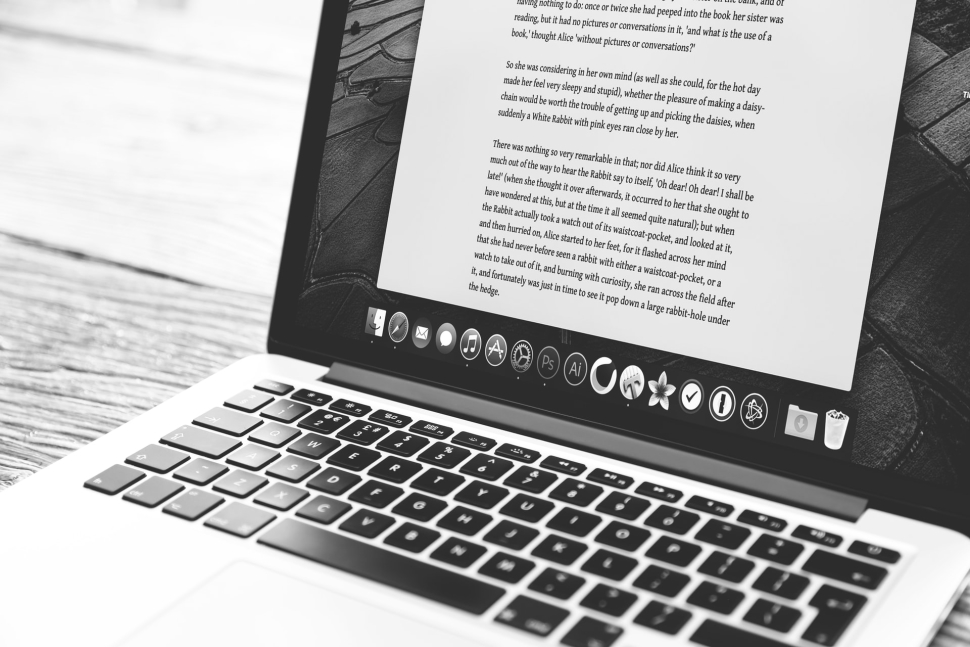
Having a writing process will help you break your writing tasks into manageable parts, making the work less intimidating. As a result, you’re less likely to experience writer’s block. It could also aid in reducing the anxiety and stress that comes with writing. Also, breaking down your writing work into different stages could ultimately improve content quality.
It will allow you to focus on your piece. That way, you can tailor your content to address the specific needs of your target audience.
We could think of writing in terms of merely producing materials for readers to enjoy. But there’s more to the story.
With the right approach, writers usually undergo three stages — thinking, learning, and discovery — to produce excellent pieces. And such authentic writing usually makes lifelong learners and versatile writers.
Writers must always follow a writing process to be efficient and more productive.
It does not matter whether you are writing a thesis, academic report , research paper , essay, or blog content. The more organize your ideas are when you present them in text, the more you will be able to connect with your readers.
What are the 7 Steps of the Writing Process?
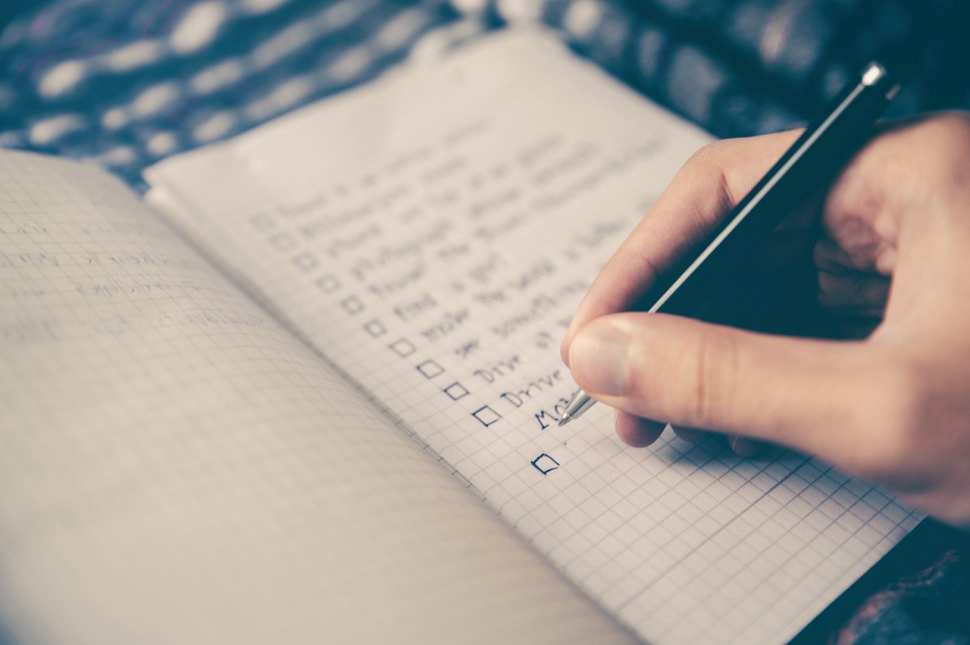
The EEF’s “ Improving Literacy in Key Stage 2 ” guidance report broke down the writing process into seven stages. This includes the planning , drafting, sharing, evaluating, revising, editing, and publishing stages. As writers become adept in these stages, they can quickly move back and forth, revising their text along the way. In other words, writing is not a linear process.
1. Planning or Prewriting
The planning or prewriting stage involves brainstorming, which takes into account your writing purpose and goal. It’s also the stage to connect your ideas using graphic organizers. The prewriting stage is when you ask the following questions:
- What will I write?
- What is the intended purpose of the writing?
- Who is the audience for your writing?
You need to do intent research to better understand what your target readers need. For instance, if you are writing for the web, you can take advantage of Google-Related Questions to know what the people are searching for online in relation to your topic.
Answering these questions ensures that you start your writing with the end in mind. Furthermore, you’ll be able to see your writing project through your audience’s eyes.
2. Create Your First Draft
Before your content is ready for publishing, you must have created a couple of drafts.
Thanks to the drafting process, you can write freely from the beginning to the end. What’s more, it provides a way to quickly draw from your outline or list of main plot points — depending on your writing process.
You could also use these stages to establish word count goals to get a rough idea of the project duration. This is especially important for creative writers such as novelists.
3. Share Your First Draft
After completing the first draft, it’s time to take a break and share the text with others.
While it may sound a bit scary at first, the feedback will help you evaluate elements of your writing. These include the composition, structure, and overall effectiveness.
Consider sharing your first draft in the following places:
- Your email list — if you have one
- Online writing groups and forums
- Social media groups for writers
- Social media group for a specific genre
In the end, you’ll know whether your first draft fulfills the intended purpose and appeal to your audience. The feedback also tells you if your writing is clear, enjoyable, and easy to read.
4. Evaluate Your Draft
This writing process involves doing a full evaluation of your first draft.
At this stage, you have to take the feedback that you’ve received into account. It’s also an excellent opportunity to address possible mistakes with grammar or mechanics.
For fiction writers, this writing stage allows you to ask whether the readers like your main character. Likewise, non-fiction writers have to ask if their content addresses their audience’s questions.
After evaluating your work, you can move to the revision stage of writing.
5. Revising Your Draft
Revision involves making changes to your work based on the feedback you received and thorough evaluation. This writing process is especially useful for fiction writers.
Along with correcting structural problems in your story, it also allows you to find loose ends and tie them up. You can also add or remove content to improve your write-up’s flow and usefulness.
When you’re done revising, you’ll have a new draft that takes you closer to your writing goal .
At this point, your newest revision becomes your latest draft. After that, you may opt to edit your own work using a content writing and editing tool like INK or hire a professional editor.
6. Editing your Content
The editing aspect of the writing process is about eliminating possible errors in your revised content. These include elements that can affect your text’s accuracy, clarity, and readability.
The editing process also addresses misquoted content, factual errors, awkward phrasing, and unnecessary repetition. Not only does good editing make your work easier, but it also makes the text more enjoyable.
Specialized writing tools such as INK could prove useful for editing web content. But it’s best to avoid self-editing for books. Consider hiring a professional editor for novels and non-fiction books.
7. Publishing your Content
The last stage of the writing process involves sharing your text with your audience.
There are various ways to publish your content, depending on the content type. For example, you can share your book using self-publishing platforms such as Kindle Direct Publishing (KDP) and CreateSpace .
Whatever the writing may be, the writing processes outlined above will help you create an excellent piece.
What is the Most Important Step in the Writing Process?
Educators have not reached a consensus on the most important writing process . Some would argue that the prewriting stage is the most critical for completing a piece of writing.
After all, brainstorming is required to create an idea that’ll eventually become the content. Besides, writers can use the prewriting stage to avoid or overcome writer’s block.
Meanwhile, educators at the University of North Carolina at Chapel Hill believe that the revision stage is the most critical. It’s when a piece of writing undergoes the most changes.
It could entail increasing the word count to supply as much information as possible. You could also rearrange some aspect of the manuscript to improve the content’s flow, pacing, and sequence.
Read More: 10 Effective Content Writing Techniques for Beginners

Found this article interesting?
Let Sumbo Bello know how much you appreciate this article by clicking the heart icon and by sharing this article on social media.
Sumbo Bello
Sumbo Bello is a creative writer who enjoys creating data-driven content for news sites. In his spare time, he plays basketball and listens to Coldplay.

How to Come up With Writing Topics for Your Website
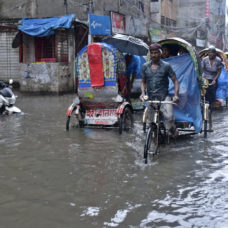
Why the Dutch are Investing Heavily in Bangladesh Water Infrastru...
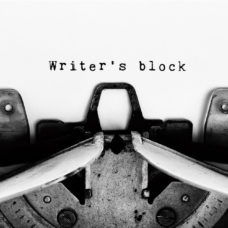
How Fighter's Blocks! Uses a Video Game to Solve Writer's Block

Google Docs Machine Translation Grammar Suggestions now Live

How Facebook Instant Articles Improves Your UX

How Many Pages is 1000 Words?
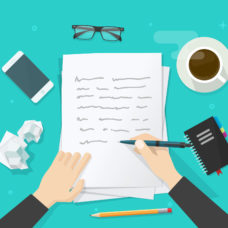
How and why you Should Only Create Authentic Content

10 Best Content Writing Courses for Beginners

4 Techniques to Make Your Content More Persuasive

Tag Manager Verification Issue on Search Console Fixed
10 Social Media Marketing Tips to Help You Succeed

How to Become a Successful Content Manager

4 Content Marketing Pitfalls and how to Avoid Them

Here's how to Write Better Listicles
Comments (2).

One has to be careful with the brokers on the internet now. Last year I was scammed in the binary trade option by a broker I met on Instagram. I invested $14000 which I lost, I couldn’t make a withdrawal and I slowly lost access to my trade account for 3 months I was frustrated and depressed. After a few months, I met Mrs Lisa who is A recovery expert that works in affiliation with the Federal Bureau of Investigation (FBI) and other law firm. she worked me through the process of getting my money back and all the extra bonus which I got during my trading. he can be of help to anyone who has a similar situation. You can contact him via her mail: Email Lisa.Eric @ proton.me WhatsApp +84 94 767 1524

Hello guys I wan to say this to whom it may concern. Investing in crypto was my husband ideal. I trade with sim ceypto platform not knowing they where sc!m and this made me lose almost all I had. Am only happy because I found help after reporting to Mrs Lisa Eric and she helped me recover all I lost to these fake crypto platform. My advice is that everyone need to be careful of the platform you deal with. If you have falling victim of these fake platform do not hesitate to file a complaint to Lisa via he mail ( Lisa.Eric @ proton.me ) she helped me and I believe she can help you too. Stay safe guys. You can visit WhatsApp +84 94 767 1524.
Link Copied Successfully
Sign in to access your personalized homepage, follow authors and topics you love, and clap for stories that matter to you.
By using our site you agree to our privacy policy.
- Enroll & Pay
- Prospective Students
- Current Students
- Degree Programs
The Writing Process
The writing process is something that no two people do the same way. There is no "right way" or "wrong way" to write. It can be a very messy and fluid process, and the following is only a representation of commonly used steps. Remember you can come to the Writing Center for assistance at any stage in this process.
Steps of the Writing Process
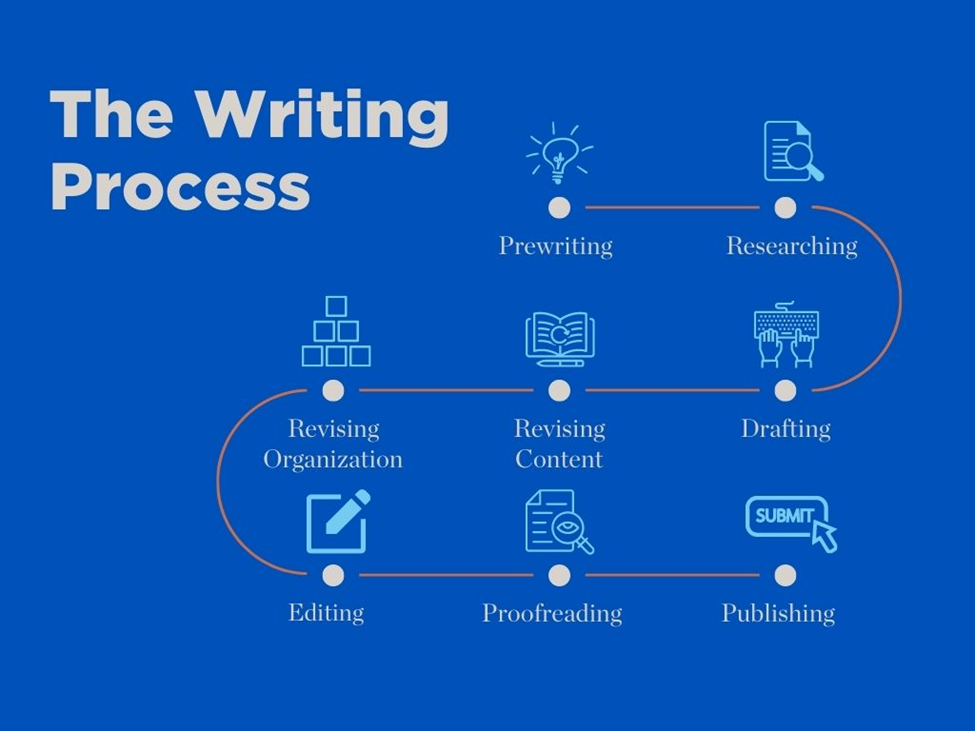
Step 1: Prewriting
Think and Decide
- Make sure you understand your assignment. See Research Papers or Essays
- Decide on a topic to write about. See Prewriting Strategies and Narrow your Topic
- Consider who will read your work. See Audience and Voice
- Brainstorm ideas about the subject and how those ideas can be organized. Make an outline. See Outlines
Step 2: Research (if needed)
- List places where you can find information.
- Do your research. See the many KU Libraries resources and helpful guides
- Evaluate your sources. See Evaluating Sources and Primary vs. Secondary Sources
- Make an outline to help organize your research. See Outlines
Step 3: Drafting
- Write sentences and paragraphs even if they are not perfect.
- Create a thesis statement with your main idea. See Thesis Statements
- Put the information you researched into your essay accurately without plagiarizing. Remember to include both in-text citations and a bibliographic page. See Incorporating References and Paraphrase and Summary
- Read what you have written and judge if it says what you mean. Write some more.
- Read it again.
- Write some more.
- Write until you have said everything you want to say about the topic.
Step 4: Revising
Make it Better
- Read what you have written again. See Revising Content and Revising Organization
- Rearrange words, sentences, or paragraphs into a clear and logical order.
- Take out or add parts.
- Do more research if you think you should.
- Replace overused or unclear words.
- Read your writing aloud to be sure it flows smoothly. Add transitions.
Step 5: Editing and Proofreading
Make it Correct
- Be sure all sentences are complete. See Editing and Proofreading
- Correct spelling, capitalization, and punctuation.
- Change words that are not used correctly or are unclear.
- APA Formatting
- Chicago Style Formatting
- MLA Formatting
- Have someone else check your work.
Purdue Online Writing Lab Purdue OWL® College of Liberal Arts
Stages of the Writing Process

Welcome to the Purdue OWL
This page is brought to you by the OWL at Purdue University. When printing this page, you must include the entire legal notice.
Copyright ©1995-2018 by The Writing Lab & The OWL at Purdue and Purdue University. All rights reserved. This material may not be published, reproduced, broadcast, rewritten, or redistributed without permission. Use of this site constitutes acceptance of our terms and conditions of fair use.
This resource provides a list of key concepts, words, and phrases that multi-lingual writers may find useful if they are new to writing in the North American educational context. It covers concepts and and key words pertaining to the stages in the writing process, style, citation and reference, and other common expressions in academic writing
Writing can’t be done without going through certain stages. All writers go through their own unique writing processes before they make their final drafts. Usually, writers start with choosing topics and brainstorming, and then they may outline their papers, and compose sentences and paragraphs to make a rough draft. After they make a rough draft, writers may begin revising their work by adding more sentences, or removing sentences. Writers may then edit their rough draft by changing words and sentences that are grammatically incorrect or inappropriate for a topic.
Brainstorming
Before you start writing, you will think about what to write, or how to write. This is called, brainstorming . When you brainstorm for ideas, you will try to come up with as many ideas as you can. Don't worry about whether or not they are good or bad ideas. You can brainstorm by creating a list of ideas that you came up with, or drawing a map and diagram, or just writing down whatever you can think of without thinking about grammar. Think of this like the erratic thunder and lightning that comes from a thunderstorm.
Next, you may want to outline your paper based on the ideas you came up with while you were brainstorming. This means that you will think about the structure of your paper so that you can best deliver your ideas, and meet the requirements of writing assignments. You will usually outline your paper by beginning with its three major parts: introduction, body, and conclusion. The specific structure of each essay may vary from assignment to assignment. Many writers call this a skeleton unto which you develop or “flesh out” the paper. Once you have the skeleton in place, you can start thinking about how to add additional detail to it.
Rough Draft
Your professors or instructors will often require you to submit a rough draft of your paper. This usually means that your work is still in progress. In the rough draft, readers want to see if you have a clear direction in your paper. When you are required to submit a rough draft, it doesn't need to be perfect, but it does need to be complete. That means, you shouldn't be missing any of the major parts of the paper. For more information on drafting and revising your work, watch our Drafting and Revising video.
Revise and Edit your writing
What is the difference between revise and edit ?
Revision lets you look at your paper in terms of your topic, your ideas, and your audience. You may add more paragraphs or remove paragraphs to better fit into a given genre or topic. In a word, revising means that you organize your writing better in a way that your audience can understand your writing better. You may want to read our resource on basic rhetorical elements to help guide your revision.
Editing typically means that you go over your writing to make sure that you do not have any grammatical errors or strange phrases that make it difficult for your readers to understand what you are trying to say. In other words, editing means that you take care of minor errors in your writing. This is a lot like polishing your writing.
Polish your writing
We often hear professors or instructors say that you need to “ polish your writing .” What do you mean by polish ?
The word polish originally meant to make something smooth and shiny, as in “she polished her leather shoes.” In writing, polish can mean to improve or perfect, or refine a piece of writing by getting rid of minor errors. In other words, when your professors or instructors say, “polish your writing,” it means that you should go over your writing and make sure you do not have any errors in grammar, spelling, punctuation, and to make sure that you do not have any sentences that do not make sense.
Essay Writing Processes
Writing process overview.
Here’s an overview of stages and processes of writing that you’ll be learning about and using as you study college writing.
- Considering writing – involves identifying the context of the writing – your purpose, writing type, and intended audience – as an initial planning step
- Prewriting – includes many different ways of generating information for writing
- Creating a thesis/topic sentences/support – involves identifying your main insight or assertion to be supported, and identifying appropriate categories and types of support
- Writing the draft – involves ordering the categories of support, creating an introduction and conclusion, and creating the whole piece of writing
- Revising – involves reviewing and evaluating the draft for context, thesis, topic sentences, and support, as well as clarity of language and appropriateness of format.
The table below more fully characterizes these five main processes. As you can see, writing is much more than the actual physical act of sitting at the keyboard and creating a draft.

One of the first things you may have noticed is the prevalence of that word “ thesis .” Sometimes you start off your writing process with a main idea, argument, or insight (thesis) that you want to write about, and sometimes the main idea or thesis evolves as you move through the various stages. Know that in any course on college writing, you’ll focus consistently on the concept of “thesis.”
Although the table above implies a sequence to these processes, given that we generally read tables from left to right and from top to bottom, the sequence actually varies from writer to writer, and from writing project to writing project. Often, writing processes are depicted as in the image shown here, showing a circle that can be accessed at any given point.
However you choose to visualize “how writing happens,” just remember that it doesn’t happen all at once, and it certainly can happen differently, depending on the particular writer and/or the particular writing task. As you do more and more writing, you’ll engage in all of these processes, and you’ll develop a sequence that’s comfortable for you.
View the following video which discusses the main stages of the writing process – Prewriting, Writing, Revising – and why it’s important to recognize and apply these stages.

To reinforce the idea of writing as a process, read a really interesting post from Anupam Krishnamurthy’s blog Medium that references some basic brain science (the way the brain works in focused and diffuse modes) to support the concept of separating your writing from your editing.
- Writing Process Overview. Authored by : Susan Oaks. Provided by : Empire State College, SUNY OER Services. Project : College Writing. License : CC BY-NC: Attribution-NonCommercial
- image of two sides of the brain. Authored by : ElisaRiva. Provided by : Pixabay. Located at : https://pixabay.com/en/brain-mind-psychology-idea-drawing-2062057/ . License : CC0: No Rights Reserved
- video The writing process and process writing. Provided by : Akademiskt skrivande/Academic Writing. Located at : https://www.youtube.com/watch?v=vRJuwzCfix4 . License : Other . License Terms : YouTube video

The Writing Process
- What Is the Writing Process?
- Strategies for Good Writing
Citation Resources
Writing and citation go hand-in-hand. Check out this list of guides covering some aspect of citation:
- Academic Writer Tutorial by Pfeiffer Library Last Updated May 22, 2023 19542 views this year
- AIR: Academic Integrity Remediation by ~ Academic Support ~ Last Updated Feb 1, 2024 7 views this year
- APA Style Help by Pfeiffer Library Last Updated May 22, 2023 1249 views this year
- Copyright by Luann Edwards Last Updated Aug 30, 2021 12 views this year
- Creating an Annotated Bibliography in APA Style by Luann Edwards Last Updated May 22, 2023 1860 views this year
- Creating an Annotated Bibliography in MLA Style by Luann Edwards Last Updated May 22, 2023 134 views this year
- Grammarly Tutorial by Luann Edwards Last Updated May 22, 2023 636 views this year
- MLA Style Help by Pfeiffer Library Last Updated May 23, 2023 51 views this year
- Plagiarism & Academic Integrity by Pfeiffer Library Last Updated May 23, 2023 61 views this year
- Predatory Publishing by Pfeiffer Library Last Updated Aug 2, 2023 349 views this year
There are several stages of the Writing Process. The following list of guides provides you with information on each of these stages:
- Brainstorming Library guide for generating ideas.
- Drafting Library guide discussing tips for essay construction.
- Editing and Revising Library tutorial covering edit and revision strategies.
You might also be interested in these tutorials covering specific writing activities and assignments:
- Conducting Effective Peer Reviews A guide for effectively participating in the peer review process
- Creating an Annotated Bibliography (APA) Resources to help you write an Annotated Bibliography in APA Style.
- Creating an Annotated Bibliography (MLA) Resources to help you write an Annotated Bibliography in MLA Style.
- Creating Effective Presentations Guide discussing tools and techniques for building effective presentations.
- Creating Outlines Guide for planning the layout of an essay prior to the drafting process.
- Literature Reviews Tutorial for locating and writing literature reviews.
- Writing Effective Thesis Statements Guide for writing an effective thesis statement for an essay.
- << Previous: What Is the Writing Process?
- Next: Strategies for Good Writing >>
- Last Updated: May 22, 2023 10:46 AM
- URL: https://library.tiffin.edu/writingprocess

Essay planning and structure: A short guide
The process of essay planning, suggested stages of essay planning.
- Structuring your essay
- Further reading
Everybody writes in a different way, so you need to find a planning and writing process that suits you. However, it is important not to leap too quickly from research to writing. It is worth giving some thought to how you will order your ideas, and what the central argument of your essay will be. This course on LinkedIn Learning has some useful hints and tips on writing to a deadline.
You may wish to reflect on your writing and consider whether it's working. If you have had feedback from your tutors about poor structure or lack of a focused argument; you may need to spend more time thinking about the thread that will run through your essay.
1. Break down the different part of your assignments question. Figure out what the task word means (e.g., discuss, argue, describe) and identify specifically what you have been asked to write. If the question is very broad and general, decide which aspects to focus your answer around.
2. Identify what your instinctive response to the essay question is, and m ind map everything you already know about the topic.
3. Research! Be sure to keep track of where you have obtained information from. You could use referencing software to keep a note of where you have found your sources of information. Engage with what you are reading, and note everything that is relevant to your response to the essay question.
4. From your research, identify key points that will help you to answer the question. You should also decide what the over-arching argument of your essay is going to be, based on the evidence you have gathered and analysed.
5. Decide on a logical order for your points. You could summarise each point on a separate card or sticky note and physically move them around until you have found the best flow. The key thing is to be aware of the progression of your argument and how each point links to the one before it and the one after. This signposting is especially important within your introduction and conclusion.
- << Previous: Home
- Next: Structuring your essay >>
- Last Updated: Nov 20, 2023 1:48 PM
- URL: https://libguides.bham.ac.uk/asc/essayplanning
Academics Hub
020 4525 3366
4.6 Rated 4.6 out of 5
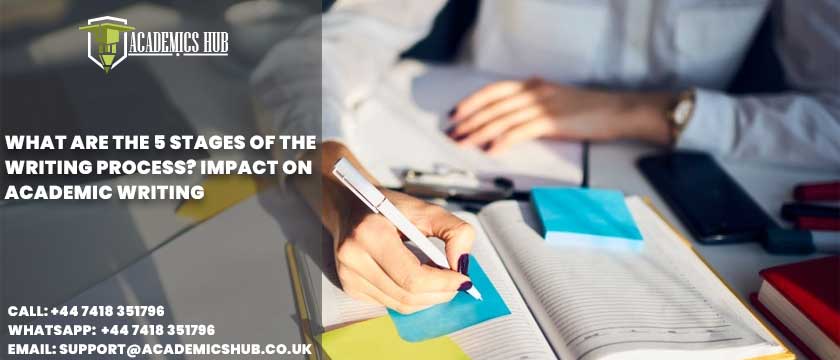
What Are the 5 Stages of Writing Process? Impact on Academic Writing
Do you know the writing process has three to five stages? It is a linear process starting from the pre-writing and ending on proofreading and editing. No matter! Whatever is the purpose of your writing, some writing process stages help you stay on track. Well! Every writer follows his or her preferences, and they follow those steps naturally. It is a step-by-step guide that writers go through: from brainstorming to publishing. An effective writing help writer manages and navigates their ideas better. Not only this, but it allows you to detangle yourself from different ideas and stay focused on the essential details.
Writing seems difficult even professional writers find It quite challenging when it comes to writing. But if you break your writing into chunks, it will be better and faster to write. Sometimes students find It difficult to write their academic papers themselves. If you are facing issues in completing your paper on time, ask for online academic writing help from experienced writers. In this blog, I have shared the writing process stages which you can learn to properly write an academic paper. But before we move further, let’s have a look at what is writing process is.
What Is Writing Process?
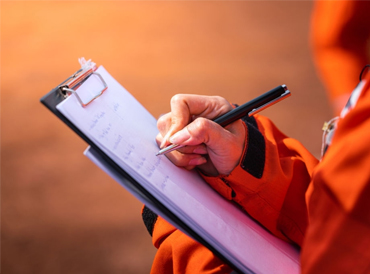
Let’s start from the beginning and understand what the writing process is. The process consists of the steps that we take to compose a text. Most individuals follow his or her style of writing that comes to them naturally. But there are basic stages of writing that you can learn through this blog that will help you create an effective paper that can grab your reader’s attention. Sometimes students wonder and ask why to choose a writing process. Here are some of the reasons why you need to follow the writing process stages.
- It will help you write more quicker and better. When you break the task into chunks, it will become easier for you to write it.
- The more you practice, the more it will refine the quality of your paper. Hence the improved writing skills.
- When you write in steps, you can focus on the individual steps through which you can learn better and produce the quality of the work.
- After you write, you will have a great quality paper with no grammatical errors and punctuation mistakes.
The Five Writing Process Stages
Here In this blog, I am going to share the five writing process stages that you need to follow to craft a perfect academic paper. Every step has a specific objective. For example, prewriting is about finding ideas and resources to produce an effective paper. Then comes the actual writing stage. Later in the stages, we will have to review, revise and proofread our work for worthy publishing.
Here are the stages that you need to follow for effective writing:
Pre-Writing

Are you ready for writing but stuck at the moment and thinking about where to start? Pre-writing includes everything you need to do before you make a rough draft. Some people get into writing without taking the time to plan and organize their thought that is why spending time on this step is crucial because it helps in gathering and preparing everything that you need to know before the subsequent writing. At this step, you have to conduct thorough research and brainstorm your ideas to better understand the topics and gather relevant information. Find reliable sources. You can use the information from those credible sources while writing.
Find Your Ideas: Everybody can generate ideas. All you need is to find inspiration. Whenever ideas come to your mind, note it done. Utilize those ideas to craft a better writing piece.
Build Your Ideas: You can use two methods to brainstorm your ideas: freewriting and brainstorming. In freewriting, you have to write each idea that comes to your mind. You can also try brainstorming to visualize your ideas.
Plan and Structure: Always plan and structure your ideas. Sort your ideas and select the one you use for your story. Keep your notes with yourself even after your book is published. They may act as a seed for your next story. Immerse yourself in the engaging gameplay and captivating themes provided by 2by2 Gaming and get ready to embark on thrilling gaming adventures with every spin.
Once you are done with pre-writing, the next step is to make a draft or start writing. While writing keeps looking at your notes and the plan you have determined earlier at stage one. During the drafting process, concentrate your ideas on the paper. Not only this, you have to organize your information logically and make the topics with sufficient details for your audience. Keep the following things in mind while making a draft:
- Put the information gathered in your own words.
- Write the paragraphs and sentences even if they are not that perfect.
- Read after you write and judge whether you have written it correctly or not.
- Write until you put all your ideas into the paper.
One of the crucial parts of the writing process is revision. It is a stage where your initial draft takes proper shape because It is where you start aligning it according to the specific rules. It is a phase where you will revisit the draft and improve its quality by eliminating, modifying, and rearranging the content. While revision, you will come across the phase where you will detect areas that need more improvement. It makes your writing more accurate and reinforces your arguments better. Moreover, it requires more thinking and research to find the information you need to logically prove your thoughts. You can take a break after you have written the text. Revise your content with open eyes and ask for help from your friends and family members. You can revise your work at any time.
Editing and Proofreading
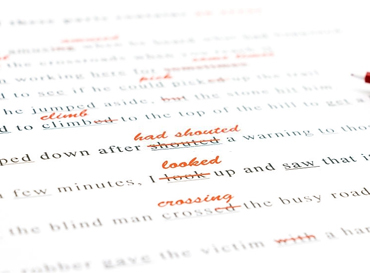
Once you have written your story, it’s time to proofread and edit it line by line. Check your content for grammatical errors, sentence structure mistakes, punctuation, redundancy, and spelling mistakes. Editing and proofreading are some of the most writing process stages that you need to put effort into. If you are not comfortable editing your paper yourself, you can hire a professional who can do this work on your behalf. Proofreading and editing ensure that your writing is coherent, clear, concise, and error-free. You can even ask for help from your colleagues, family members, and friends.
It is one of the last writing process stages. It is the stage where you have to share your piece of work with an audience. If you are publishing a blog post or article, you have to optimize it for SEO purposes. You have to add keywords, internal and external links, and image alt tags, etc. On the other hand, publishing as a guest post is entirely different. In guest post publishing, you have to stick to the publishing website’s rules before submission. Not all your writing will be taken to the publishing stage, but you can even turn a paper into your professor constitutes publishing.
Impacts of Effective Writing Process on Academic Writing
Until now, we have discussed the writing process stages. You can use these stages to produce effective writing. No matter! Whatever kind of writing you require, you can follow the above-mentioned steps to polish your writing skills. Academic writing Is a major part of the education system. Students have to write many assignments during their college and university life. The goal of every student is to achieve good grades in exams. If students utilize these steps in their academic writing process, they can impress their professors. These steps polish one’s writing skills. Thus, brigs the best results for students. Academic writing is an essential part of students’ academia. That is why they need to focus on essential writing skills to score better in their exams.
Students who don’t know how to write an academic paper look for someone who can do their work on time. If you are having difficulty in writing your academic paper, you can get writing help from professional writers having a proven track record in this field. By seeking academic writing help, you will get a high-quality and unique paper before the deadline. Not only this, academic writing help services offer affordable prices to the students so they can easily avail academic assistance at any time. Get in touch with adept and qualified writers to ace your grades.
Are you interested to learn about the writing process stages? In this blog, I have discussed in detail the five stages of the writing process that you can use to compose a perfect paper. Writing is crucial for everyone in any industry. Especially, students have to craft academic papers during their academic careers. If you want to achieve high grades in your exams, you need to learn these steps of effective writing. It starts from the pre-writing and ends at publishing. In between the stages, one has to write, revise and proofread the work. Are you worried about how to write your academic paper? Look no further! You can seek academic writing help from credible websites that offer online writing assistance to students struggling with academic pressure.
Leave a Comment Cancel Reply
Your email address will not be published. Required fields are marked *
Save my name, email, and website in this browser for the next time I comment.
Get Discount
- Log in Join
- Student Life
- Entertainment
- Student Magazine
- Competitions
- Submit Content

The Five Stages Of Essay Writing!

It’s the end of the first term and we all have deadlines coming up. No more lazy days spent watching Jeremy Kyle whilst eating the entire fridge, days are spent with our head buried in piles of books wondering when you ever learnt half of this stuff.
When deadlines are approaching everyone goes through the same emotions and the same five stages of writing essays.
Number one, the calm phase. You get your essay months in advance and it feels like you have all the time in the World to complete it. So, the piece of paper your lecturer has handed you goes to the bottom of a pile of books that you’ve not read all year, whilst you sit back and catch up on the weeks TV.
Number two, procrastination. The essay deadline is swiftly approaching and you know it’s got to be done but trying out your mother’s homemade Yorkshire Pudding recipe seems much more important than writing your essay. You do everything you can in order to put off doing the essay, even to go as far as visiting the gym you joined two months ago and never went to.
Number three, mad panic and self loathing. You have three weeks to get the essay done and you’ve not even looked at the questions since they’ve been handed to you. Rushing to the library and getting out every book you can, that has remotely anything to do with the essay subject. Whilst you sit there pulling your hair out you begin to hate yourself, chuntering “why didn’t you start this sooner” under your breath whilst highlighting every quote in sight.
Number four, the breakdown. Time is running out and you realise how much you’ve got left to do. Panic sets in and thoughts that you can’t do it start begin. You spend every evening in front a computer screen surrounded by piles of books and lists of quotes with 10 bars of chocolate and cans of red bull to get you through the night.
Number five, completion. It is done, it is over, you’ve done it! All those hours of hard work have paid off and you’re sat looking at your screen with a completed essay staring right back at you. Finally being able to submit a finished product and going back to watching Desperate Housewives is a relief!
- Subscribe to The Student Pocket Guide for exclusive competitions, deals, discounts, tips and advice!
- Read The Student Pocket Guide.

Before you go! Have you read our Magazine?

IMAGES
VIDEO
COMMENTS
In other words, you start with the endpoint in mind. You look at your writing project the way your audience would. And you keep its purpose foremost at every step. From planning, we move to the next fun stage. 2. Drafting (or Writing the First Draft) There's a reason we don't just call this the "rough draft," anymore.
Table of contents. Step 1: Prewriting. Step 2: Planning and outlining. Step 3: Writing a first draft. Step 4: Redrafting and revising. Step 5: Editing and proofreading. Other interesting articles. Frequently asked questions about the writing process.
Essay writing process. The writing process of preparation, writing, and revisions applies to every essay or paper, but the time and effort spent on each stage depends on the type of essay.. For example, if you've been assigned a five-paragraph expository essay for a high school class, you'll probably spend the most time on the writing stage; for a college-level argumentative essay, on the ...
This article provides a comprehensive, research-based introduction to the major steps, or strategies, that writers work through as they endeavor to communicate with audiences.. Since the 1960s, the writing process has been defined to be a series of steps, stages, or strategies. Most simply, the writing process is conceptualized as four major steps: prewriting, drafting, revising, editing.
A writing process or method includes the following stages: planning, drafting, sharing, evaluating, revising, editing, and publishing. The prewriting stage is the most critical stage of the writing process. We all follow a writing process when creating an article or any written content.
Step 1: Prewriting. Think and Decide. Make sure you understand your assignment. See Research Papers or Essays. Decide on a topic to write about. See Prewriting Strategies and Narrow your Topic. Consider who will read your work. See Audience and Voice. Brainstorm ideas about the subject and how those ideas can be organized.
Here's a step by step guide to the writing process. Keep what works for you and discard the rest. Your material and process will guide you to your own set of rules. 1. Prewriting. "I will always jot down things, little ideas. I may never go back to them. I may never see them again.
Usually, writers start with choosing topics and brainstorming, and then they may outline their papers, and compose sentences and paragraphs to make a rough draft. After they make a rough draft, writers may begin revising their work by adding more sentences, or removing sentences. Writers may then edit their rough draft by changing words and ...
Here's an overview of stages and processes of writing that you'll be learning about and using as you study college writing. Revising - involves reviewing and evaluating the draft for context, thesis, topic sentences, and support, as well as clarity of language and appropriateness of format. The table below more fully characterizes these ...
An essay is a short form of writing that discusses, describes, or analyzes one topic. It can range in length from one paragraph to several pages and be on any topic. The writer expresses their opinion on the subject, supported by evidence and reasoning. The history of the essay is believed to date back to the 16th century.
the stages described in this chapter? Assignments or Activities 1. Instructor: Write two headings on the whiteboard: "Not Great" and "Great!". Working together as a class, list various essay-writing strategies under each heading (for example, asking the instructor to clarify the assignment; pulling an all-nighter
There are several stages of the Writing Process. The following list of guides provides you with information on each of these stages: Brainstorming. Library guide for generating ideas. Drafting. Library guide discussing tips for essay construction. Editing and Revising. Library tutorial covering edit and revision strategies.
This course on LinkedIn Learning has some useful hints and tips on writing to a deadline. ... Suggested stages of essay planning. 1. Break down the different part of your assignments question. Figure out what the task word means (e.g., discuss, argue, describe) and identify specifically what you have been asked to write. If the question is very ...
Here are the seven stages of essay writing presented by one of your favourite TV shows, The Office. Stage 1. Your lecturer or teacher reveals the essay and the tight deadline. You panic and realise you haven't listened to a single thing that has been said over the course of the last few weeks meaning this essay is going to be near impossible.
The writing process, according to the EEF's ' Improving Literacy In Key Stage 2 ' guidance report, can be broken down into 7 stages: Planning, Drafting, Sharing, Evaluating,Revising, Editing and Publishing. In a recent training session, when I asked a group of school leaders and teachers to write down elements of current practice in their ...
Here are the 4 stages of the writing process: 1. Prewriting. At this stage, the writer identifies everything they need to do before starting on their rough draft. Many overlook this step altogether and jump straightaway into writing, without planning and organizing their ideas. The result ends up being a sub-standard piece that takes a lot more ...
Editing and Proofreading. Once you have written your story, it's time to proofread and edit it line by line. Check your content for grammatical errors, sentence structure mistakes, punctuation, redundancy, and spelling mistakes. Editing and proofreading are some of the most writing process stages that you need to put effort into.
Number one, the calm phase. You get your essay months in advance and it feels like you have all the time in the World to complete it. So, the piece of paper your lecturer has handed you goes to the bottom of a pile of books that you've not read all year, whilst you sit back and catch up on the weeks TV. Number two, procrastination.
Writing an essay can be an overwhelming errand, whether you're a student, an expert, or an academic researcher. To address the growing demand for dependable and excellent essay writing help in ...